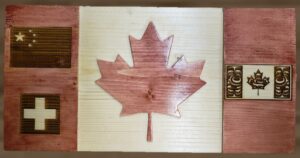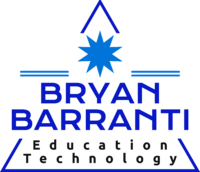When I first encountered Luciana de Oliveira et al.’s paper, Planning for Instruction Using a Language-Based Approach to Content Instruction for Multilingual Learners (de Oliveira et al., 2021), it reshaped my approach to supporting English Language Learners (ELLs) in my woodworking classroom. The 6 Cs of Support (Connection, Culture, Code-breaking, Challenge, Community and Collaboration, and Classroom Interactions) provided a practical framework for simultaneously fostering language development and content learning in a hands-on setting. As de Oliveira et al. explain, “Teachers have the dual responsibility of facilitating MLs’ [multilingual learners’] content learning while also supporting their ongoing English language development” (2021, p. 25). This balance between technical skill-building and academic language development became central to my teaching.
The 6 Cs framework helped me rethink woodworking as a place where students not only create functional objects but also engage in meaningful reflection, collaborative learning, and language acquisition. In this environment, students’ identities and voices are embedded in their projects, transforming the act of making into something more impactful.
1. Connection: Making Learning Meaningful
Guiding Question: What will you do to connect the lesson to students’ prior academic learning, backgrounds, and experiences?
The C of Connection emphasizes linking students’ prior experiences to the content, making learning relevant and engaging. This principle resonates with culturally sustaining pedagogy (Paris, 2012), which suggests that students learn best when they can draw on their personal backgrounds and experiences (as cited in de Oliveira et al., 2021, p. 14). In my woodworking classroom, I use projects like the Symbolic Animal Box Project to help students connect their cultural backgrounds with creative tasks.
 Example: One student from Mexico selected a cat for his project and engraved it onto his wooden box. He shared that in Mexican folklore, carved spirit animals, or alebrijes, carry symbolic meanings. For his family, the cat represents independence and freedom, values they associate with their move to Canada and the opportunities they have gained since immigrating. (see more about alebrijes)
Example: One student from Mexico selected a cat for his project and engraved it onto his wooden box. He shared that in Mexican folklore, carved spirit animals, or alebrijes, carry symbolic meanings. For his family, the cat represents independence and freedom, values they associate with their move to Canada and the opportunities they have gained since immigrating. (see more about alebrijes)
Reflection: This project demonstrated how linking content to personal experiences can lead to deeper engagement and meaningful learning. When students see their identities reflected in the classroom, they feel a sense of ownership, which motivates them to participate more actively. The symbolic animal box project allowed this student not only to demonstrate his technical skills but also to share a story about his family’s resilience and growth.
2. Culture: Bridging Home and School
Guiding Question: How will you link the new content skills and concepts to students’ cultural and linguistic resources to support academic learning?
Moll et al. (1992). highlight the importance of drawing on students’ “funds of knowledge” (as cited by de Oliveira et al., 2021, p. 14), the cultural knowledge they bring from home. In my class, I embed cultural connections into woodworking projects that encourage students to reflect on their heritage. The Laser-Engraved Wall Shelf, for example, allows students to engrave symbols that reflect their personal or family traditions.
 Example: One student from Colombia engraved a wax palm onto her shelf, explaining that it is a sacred national symbol representing life and fertility. As she worked on the design, I guided her through a reflective writing process using sentence starters like, “The wax palm represents __ because…,” helping her articulate how the symbol connects to her family’s values.
Example: One student from Colombia engraved a wax palm onto her shelf, explaining that it is a sacred national symbol representing life and fertility. As she worked on the design, I guided her through a reflective writing process using sentence starters like, “The wax palm represents __ because…,” helping her articulate how the symbol connects to her family’s values.
Reflection: This project made me realize how woodworking can go beyond crafting objects to become a platform for storytelling. By incorporating meaningful cultural symbols, students gain a deeper appreciation of their own heritage while practicing academic writing and presentation skills. The wall shelf project has become one of the most powerful examples of how woodworking and cultural expression can be seamlessly integrated.
3. Code-breaking: Navigating Technical and Academic Language
Guiding Question: What will you do to explicitly teach ways of doing school, academic literacy, and disciplinary, linguistic, and cultural codes of content learning? How will you model the language forms/ vocabulary/function/skills?
Code-breaking is crucial in woodworking, where students encounter technical language related to tools, materials, and design processes. De Oliveira et al. (2021) emphasize that teachers must make the “academic dimensions of content transparent” by explicitly teaching technical vocabulary and language structures (p. 14). In my Personal CNC/Laser Project, students develop step-by-step plans and document their design journey, blending technical precision with reflective writing.
Example: Students describe key stages of the project, including:

By Teerapat
- Brainstorming ideas through thumbnail sketches or doodles to visualize design possibilities.
- Refining those sketches into detailed working drawings that show measurements and dimensions.
- Preparing the digital design using CorelDraw, explaining design decisions (e.g., “I chose this symbol because…”).
- Setting machine parameters like engraving depth and speed.
- Assembling the final product and evaluating its success.
I provide sentence starters like, “I refined my design by __ because…” and “I adjusted the machine settings to __ in order to __,” which help students scaffold their technical explanations.
Reflection: Code-breaking is not just about learning new terms, it’s about helping students structure and articulate their thinking. By guiding them to document each design step, students gain clarity about their process and develop the ability to explain their work. This prepares them for more advanced projects where both technical skills and language are critical.
4. Challenge: Balancing Rigour with Support
Guiding Question: What aspects of disciplinary literacy will you address? Which higher-order thinking and reasoning skills will you focus on?
High challenge paired with high support is key to helping students grow. De Oliveira et al. stress that ELLs should be given challenging tasks, but they must be paired with scaffolding to ensure success. The Personal CNC Sign Project exemplifies this by blending creative design, personal identity, and technical problem-solving.
 Example: Students design personalized signs featuring symbols, words, or images that represent aspects of their identity, family, or culture. As they progress through the project, I provide scaffolding through design templates, sentence starters, and peer discussions, ensuring they can reflect on and refine their designs while navigating the technical complexities of CNC production.
Example: Students design personalized signs featuring symbols, words, or images that represent aspects of their identity, family, or culture. As they progress through the project, I provide scaffolding through design templates, sentence starters, and peer discussions, ensuring they can reflect on and refine their designs while navigating the technical complexities of CNC production.
Reflection: High challenge fosters resilience and independence when students feel supported. I’ve witnessed students who were initially hesitant become confident in explaining their designs and sharing their progress. This project highlights that when students are pushed to stretch their abilities, they develop critical thinking and problem-solving skills that extend beyond the classroom.
5. Community and Collaboration: Learning Together
Guiding Question: How will you engage students in collaboration and build a community of practice?
Collaboration is central to learning in woodworking, as students often work in pairs or groups to complete projects. I structure collaborative design reviews and peer feedback sessions using reflection prompts to guide meaningful discussions.
Example: During the Personal CNC Sign Project, students present their designs to peers, answering reflection prompts like:
- “Why did you choose this symbol or design?”
- “What does it represent about your background, family, or interests?”
- “What challenges have you encountered, and how did you solve them?”
Peers provide constructive feedback, helping students revise and refine their designs.
Reflection: Collaborative discussions build more than technical competence, they help students develop communication skills and confidence. By sharing their work and receiving feedback, students learn to articulate their decisions and listen to others’ perspectives, creating a supportive community of learners.
6. Classroom Interactions: Building Language Through Discourse
Guiding Question: How will you use “interactional scaffolding” in the classroom?
Interactional scaffolding involves teacher-student dialogue that encourages students to elaborate on their learning. I embed these interactions throughout every stage of the design and build process, helping students connect technical tasks to language development.
Example: During project reviews, I ask questions like:
- “What story does your sign tell?”
- “How did you decide on this design?”
When students respond, I provide feedback and recast their answers to reinforce key vocabulary. For example, if a student says, “I made it smaller,” I might respond, “Yes, you reduced the dimensions to improve the fit. Can you explain how that adjustment improved the overall design?”
Reflection: These interactions transform learning into an ongoing dialogue. By embedding academic language into these discussions, students gain confidence in explaining their projects while building the vocabulary they need to succeed in future academic settings.
Final Thoughts: The Critical Role of LACI in My Teaching
De Oliveira et al.’s 6 Cs framework has fundamentally reshaped my approach to teaching woodworking. Projects like the Personal CNC Sign and Laser-Engraved Wall Shelf show how high challenge, high support, and meaningful reflection can be woven into every stage of learning. The framework’s emphasis on purposeful scaffolding ensures that even the most complex tasks are accessible to ELL students, fostering independence, creativity, and growth.
Scaffolding, I’ve learned, is not about simplifying content but about making it meaningful and achievable. By blending technical instruction with reflective practice, students leave my woodworking classroom with more than functional projects, they leave with the confidence and skills to express who they are, what they’ve learned, and how they’ve grown.
Planning Guide with LACI’s Six Cs of Support for Multilingual Learners (Adapted for Woodworking and Scaffolding ELL Students)
| C of Support | Guiding Question | Application in Woodworking | Example Activities | Scaffolding for ELL Students |
| Connection | What will you do to connect the lesson to students’ prior academic learning, backgrounds, and experiences? | Relating woodworking projects to students’ prior knowledge, personal experiences, and cultural backgrounds. | In the symbolic animal box project, students reflect on previous woodworking experiences, such as measuring, cutting, or designing from earlier projects. They then integrate their knowledge into designing an engraving that connects to their personal or cultural identity, linking past technical skills with creative expression | Sentence starters for reflecting on personal significance (e.g., “This animal is important to my family because…”);
Visual prompts to aid brainstorming design ideas. |
| Culture | How will you link the new content skills and concepts to students’ cultural and linguistic resources to support academic learning? | Encouraging students to bring their cultural identities into their projects, linking design tasks to their heritage, values, and family traditions. | In the wall shelf project, students engrave culturally significant symbols (e.g., the wax palm) and write reflections on the meaning and significance of their designs. | Guided discussions on cultural significance with peers and teachers;
Bilingual word banks for key terms related to design and reflections. |
| Code-Breaking | What will you do to explicitly teach ways of doing school, academic literacy, and disciplinary, linguistic, and cultural codes of content learning?
How will you model the language forms/ vocabulary/function/skills? |
Teaching students how to navigate and describe technical processes using woodworking and academic vocabulary, connecting practical tasks with reflective writing. | In the Personal CNC/Laser project, students document their process (from brainstorming to machine setup) using sentence frames to describe design decisions. | Modelled examples of design logs using scaffolding templates;
Sentence frames (e.g., “I refined my design because…”);
Vocabulary lists for machine-specific terms. |
| Challenge | What aspects of disciplinary literacy will you address? Which higher-order thinking and reasoning skills will you focus on? | Providing challenging projects that combine technical problem-solving and personal reflection, supported by scaffolding and collaborative learning. | In the Personal CNC sign project, students design personalized signs incorporating symbols that represent their identity, reflecting on design decisions through structured templates. | Step-by-step visual guides for CNC machine setup;
Check-ins with teacher feedback on progress;
Structured peer feedback sessions on designs. |
| Community and Collaboration | How will you engage students in collaboration and build a community of practice? | Structuring collaborative design reviews and peer feedback sessions to foster discussion, reflection, and learning from peers. | Students present their work during the Personal CNC sign project, responding to reflection prompts and integrating feedback from peers before revising their designs. | Peer mentors assist with design critiques and language development;
Reflection prompts guide discussions (e.g., “What challenges did you face?”). |
| Classroom
Interactions |
How will you use “interactional scaffolding” in the classroom? | Using teacher-student dialogue to provide real-time feedback and recast student responses, embedding academic language within technical discussions. | During project reviews, students discuss their Personal CNC sign project, answering questions like “What story does your sign tell?” while receiving immediate feedback on vocabulary and clarity. | Recasting student responses with correct terminology;
Targeted questions to prompt elaboration;
Oral presentations to reinforce speaking and listening skills. |
References
de Oliveira, L. C., Braxton, D., & Gui, J. (2021). Planning for Instruction using a Language-Based Approach to Content Instruction for Multilingual Learners. Journal of English Learner Education, 13(1). https://stars.library.ucf.edu/jele/vol13/iss1/2
